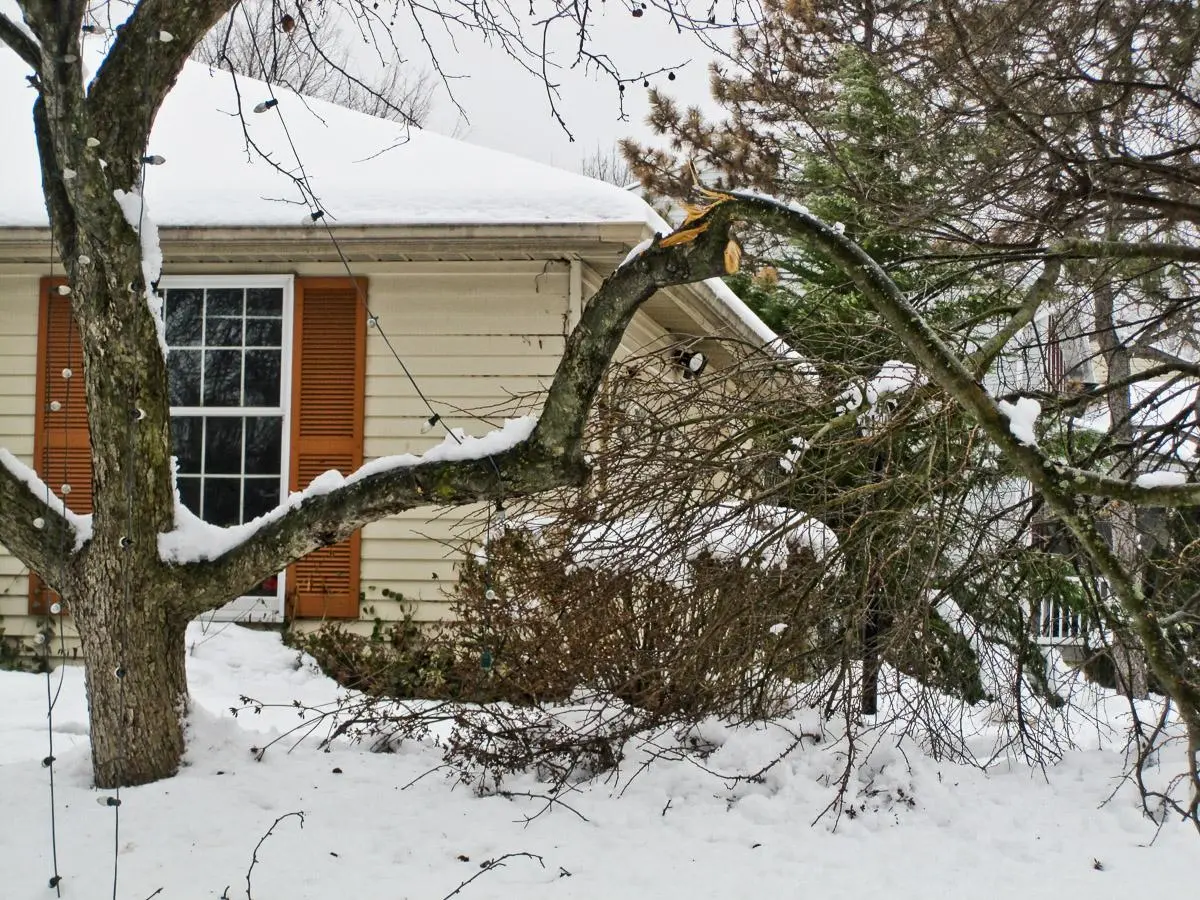Ice Storms
Every year, ice storms roll through the state that have the potential to cause considerable damage to urban and natural areas. Glazed roads, power outages, and fallen trees may cause injury to people, property, and your pocketbook.
Characteristics of Trees That Increase Damage Susceptibility
Heavy snow and ice on branches can lead to breakage at seemingly random points due to a variety of factors including decay, diseased areas, dead branches, and severed roots or at points of attachment (included bark, long or heavy branches, weak branch unions). Tree species with broad crowns (decurrent branching), shallow roots, and stem inflexibility have a greater chance of damage inflicted during an ice or heavy snow storm. Examples of trees with such characteristics include Siberian and American elm, hackberry, green ash, birch, and honey locust.

Characteristics of Trees That Increase Damage Resistance
Trees that exhibit conical (excurrent) branching patterns, strong branch attachments, flexible stems, and low surface area of lateral branches are considered to be somewhat resistant to heavy snow and ice storms. The age of the tree also factors in as younger trees generally have greater flexibility than mature ones do. Tapered tree trunks that are wider towards the bottom than they are on top have a stronger foundation to withstand high winds and heavy snowfall. Examples of trees with such characteristics include Kentucky coffee tree, black walnut, ginkgo biloba, pines and spruces.


Comments (0)
Sorry! The comments have been closed.